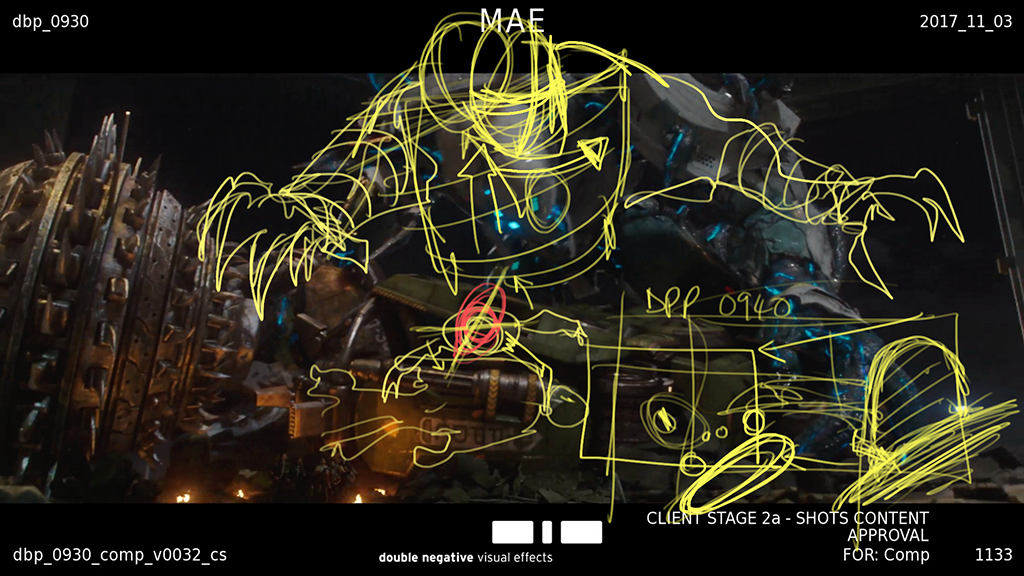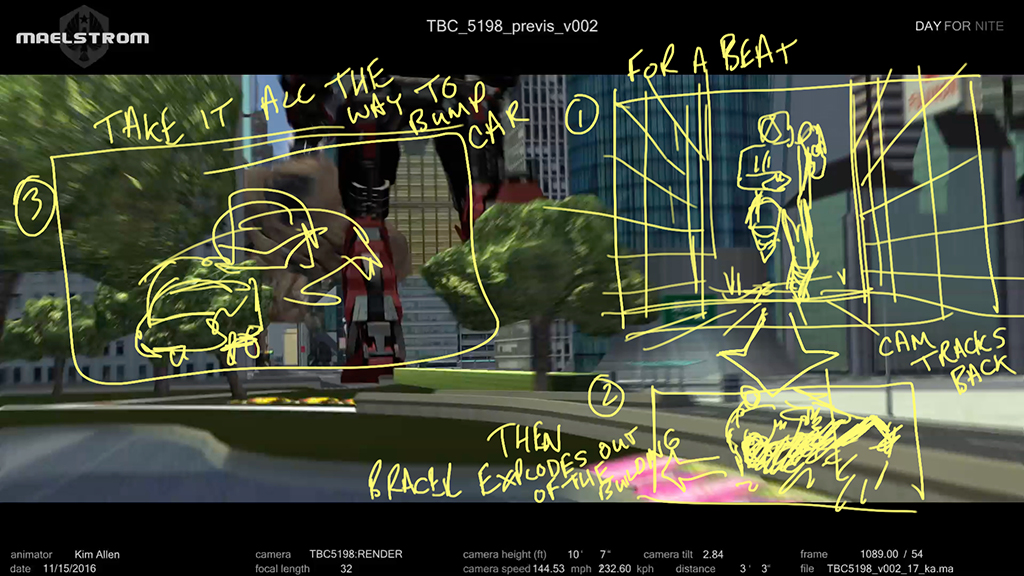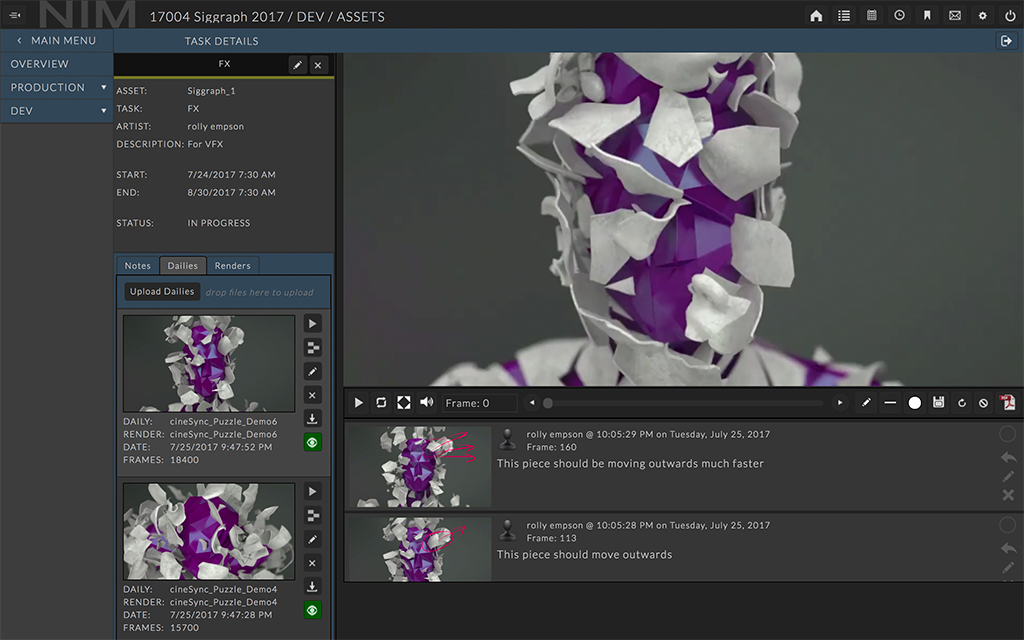By IAN FAILES

By IAN FAILES

Most visual effects practitioners probably have heard of Cospective’s cineSync. The review and approval tool is a mainstay of VFX production, allowing, for example, a director in Los Angeles to review a shot being worked on in Melbourne by enabling both locations to see the same frame of video at exactly the same time.
CineSync was developed by Rising Sun Research in 2005, a spin-off of Adelaide-based VFX studio Rising Sun Pictures (Rising Sun Research changed it name to Cospective in 2012), so cineSync has always had a base in the day-to-day runnings of a visual effects production. But how has the review tool itself been reviewed after more than a decade of industry use? To find out, VFX Voice asked Cospective CEO Rory McGregor how feedback from customers has shaped cineSync in recent releases.

“More than once we’ve been asked to allow a review that’s happening on a yacht in the Mediterranean. How do you get the files to people easily? When people become more mobile, how do you secure the content?”
—Rory McGregor, CEO, Cospective
McGregor says the feedback-based features put into cineSync fall roughly into two categories: security and visualization. Security in the filmmaking world is a hot topic. And while it can be relatively simple to control security protocols in standalone buildings, filmmakers tend to be increasingly mobile, notes McGregor.
“More than once we’ve been asked to allow a review that’s happening on a yacht in the Mediterranean. How do you get the files to people easily? When people become more mobile, how do you secure the content? Protecting everything with authentication layers and complex passwords really doesn’t work in many cases, because that director on the yacht might be doing a dozen projects a year, between film, TV and commercials. The director is not going to memorize all the passwords, which means things get written down, get lost – it’s a security nightmare.”
To deal with this challenge, Cospective asked several studios and production coordinators about how content tends to be shared around in a secure manner, before adding the ability in cineSync to automatically encrypt all media sent out for review. This means the media cannot be opened by anyone until they are in a cineSync review with the person who encrypted the file.
“Then,” says McGregor, “at the end of the review, cineSync automatically deletes the media from the guest’s machine, partly to ensure no sensitive media is left in the wild, and partly so the guest’s machine doesn’t fill up with encrypted content. It’s security that guests can’t bypass, but it’s also something that happens invisibly. Guests don’t need to remember anything or learn anything, and if they leave their laptop in a cab, there’s no sensitive content on there – at least not from cineSync sessions!”

“At the end of the review, cineSync automatically deletes the media from the guest’s machine, partly to ensure no sensitive media is left in the wild, and partly so the guest’s machine doesn’t fill up with encrypted content. It’s security that guests can’t bypass, but it’s also something that happens invisibly.”
—Rory McGregor, CEO, Cospective
In terms of visualization, Cospective has had the benefit of its software being used on several large-scale Disney/Marvel films. Features in cineSync, such as flipping and flopping images, several masking options, and the Hue wheel – which allows uses to cycle every color in the frame through every other color – have come from feedback about what the image manipulations are possible with and desired from the tool.
“Our favorite request came from Jake Morrison, who was the VFX supervisor on Thor: Ragnarok,” says McGregor. He asked for the ‘Kitten of Calm.’ It’s an image of a small kitten, set to a track called ‘Left Bank Two.’ Whenever reviews get heated, or if an argument ever breaks out, Jake can bring up the Kitten of Calm, and all review participants are immediately soothed – at least that’s the theory! We originally did it as a custom build, but it’s now included as an Easter egg in our official released version.”
With every new production, Cospective hears about novel ways in which cineSync has been utilized. Traditionally, the tool has mostly been used in post-production, but one trend McGregor has noticed is review of previs content with the visual effects house that will ultimately be working on the final shots. This took place most recently with Visual Effects Supervisor Peter Chiang on Pacific Rim Uprising.
 Cospective recently made updates to cineSync to integrate it more closely with Autodesk’s Shotgun, another common production management tool.
Cospective recently made updates to cineSync to integrate it more closely with Autodesk’s Shotgun, another common production management tool. “[Reviewing previs content] this way, [the VFX supervisor] can easily show placement of the VFX components, they can quickly animate sequences to show movement, and they can talk through what they want while visually demonstrating it. It’s a really powerful way to use cineSync, and it honestly wasn’t what we first intended when we built it.”
—Rory McGregor, CEO, Cospective
“In this way,” describes McGregor, “[the VFX supervisor] can easily show placement of the VFX components, they can quickly animate sequences to show movement, and they can talk through what they want while visually demonstrating it. It’s a really powerful way to use cineSync, and it honestly wasn’t what we first intended when we built it.
“It was also fascinating talking to the Marvel guys about signature colors,” adds McGregor. “You don’t really think about it until someone points it out, but every character in the Marvel Universe has their own color. If a character can shoot lightning, or create a visible electrical field, then it has to do it in a different color than other characters. The reason the Hue wheel was added to cineSync was so that colors could be quickly auditioned. If a character is shooting blue lightning, but it’s not Thor, then the Marvel team can very quickly cycle through other colors with cineSync’s Hue wheel and audition new color choices.”
More new features in cineSync are on the way. These include sequence playback that will enable clips to be assembled together for play-out, controls for managing handles and re-ordering of clips, and tools to deal with 360-degree video and VR clips. The planned updates are part of continual updates to the software, which often come from customer suggestions.
“We regularly adapt and evolve cineSync’s feature set based on feedback from users,” says McGregor. “After all, we want cineSync to be as useful as possible, so being responsive to feedback is a very important part of ensuring that the tool remains relevant.”